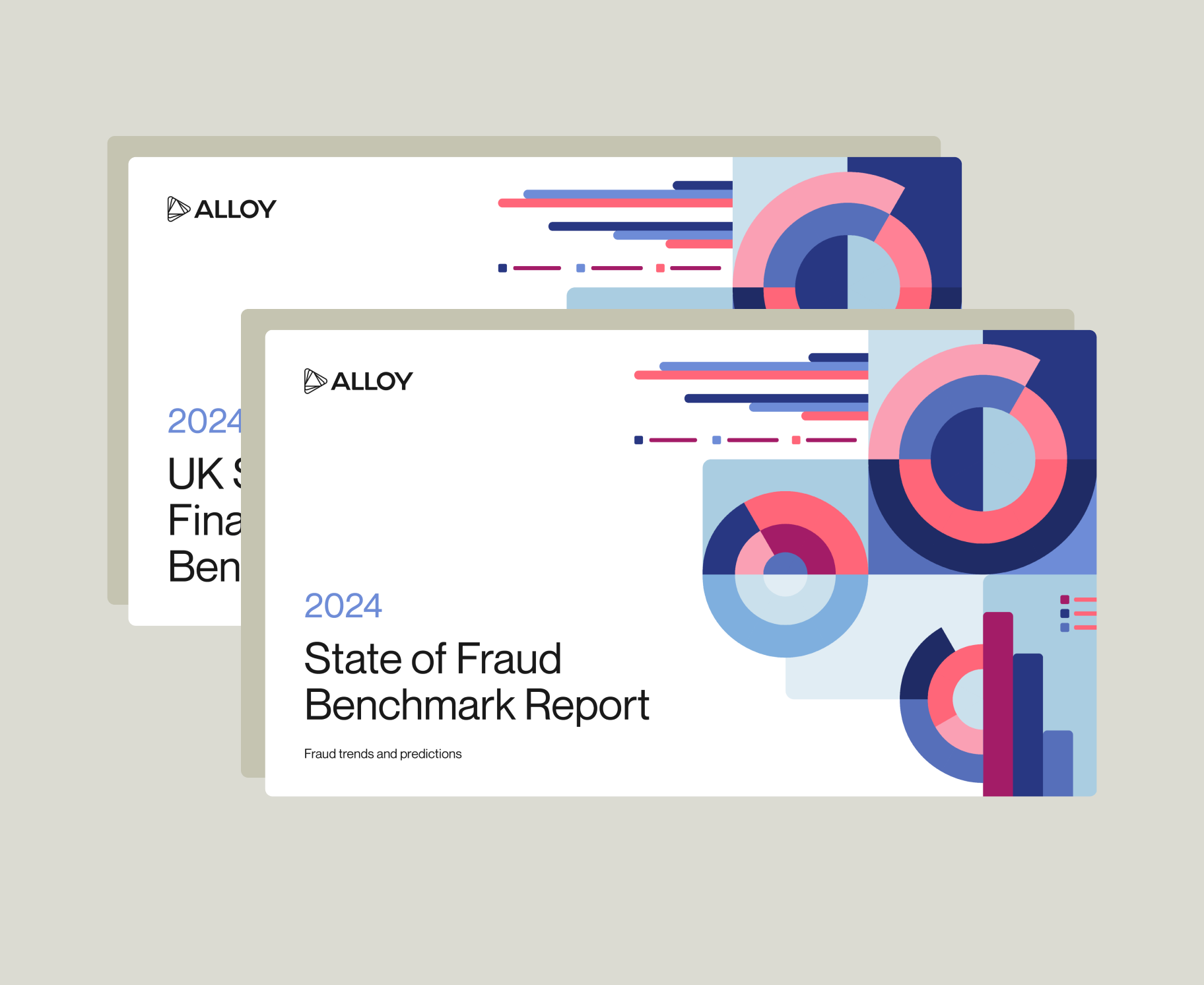Examining fraud trends in financial services
In 2023, fraud remained a top challenge for banks, fintechs, and credit unions. But what types of fraud were most prominent, and how are organizations fighting back against growing fraud threats?
Alloy surveyed more than 400 decision-makers in fraud-related roles at financial services companies in the US and UK to find out how fraud has impacted their business over the last twelve months, what they're doing to combat it, and their predictions for the year ahead.
Data from the 2024 report was collected in November 2023, and data from the 2023 report was collected in September 2022.
Alloy's 2025 State of Fraud Report is now live. Explore our latest insights here.
The direct cost of fraud is significant. 57% of respondents indicated that their organization lost over $500K (EUR/USD) in direct fraud losses over the past twelve months. Over one-quarter of respondents lost over $1 million in direct fraud losses over the past 12 months.
Direct fraud losses only account for the actual amount of money successfully stolen due to fraudulent activity. There are also indirect fraud costs that financial services companies pay, such as money spent on investigating and recovering fraud funds, loss of customers, and reputational damage.
Over two-thirds of respondents reported an increase in the number of fraud attempts in consumer accounts over the past 12 months. Meanwhile, just over half of respondents said that the number of fraud attempts in business accounts increased over the past year.
Often the result of social engineering scams, APP fraud occurs when someone is coerced into authorizing a real-time payment to an account controlled by a fraudster. Over the past twelve months, new developments in artificial intelligence (AI) enabled fraudsters to execute more sophisticated social engineering scams than ever before.
As a result, 22% of respondents ranked APP fraud as their top fraud type by case volume, leading all other categories.
Across all industry segments, step-up authentications — such as phone-centric verification, selfie/liveness tests, and document verification — were the most prevalent fraud prevention measures to respond to suspicious activity. Meanwhile, banks were more likely than fintechs and credit unions to freeze accounts when fraud is suspected.
75% of respondents said they plan to invest in an Identity Risk Solution (an end-to-end platform to manage identity, fraud, credit, and compliance risks throughout the customer lifecycle) in the next twelve months. Credit unions and community banks are even more likely to plan to invest in an Identity Risk Solution this year, with 88% indicating their plans for implementing an Identity Risk Solution.
Respondents included 450 decision-makers working at financial organizations in:
Surveys were conducted by Qualtrics, a leading survey platform that powers +1B surveys every year.

Alloy’s 2025 State of Fraud Benchmark Report is out now. See how financial institutions and fintechs fared against fraud, and which trends carried over.
Alloy’s State of Fraud Benchmark Report is an annual study of fraud trends across banks, fintechs, and credit unions. It highlights where fraudsters are gaining ground, how financial institutions are responding, and what fraud leaders predict for the year ahead.
We publish the report for decision-makers in fraud, compliance, risk, and digital banking strategy. Whether you’re a fraud analyst, compliance leader, or part of a digital banking team, the benchmarks help you measure your institution’s performance against industry peers.
Alloy partners with trusted survey providers like Qualtrics to ensure data accuracy and reliability. For the 2024 report, 450 fraud-related decision-makers across the US and UK were surveyed, representing institutions from fintech startups to enterprise banks. Of those decision-makers, 250 were based in the US, and 200 were based in the UK.
The 2024 edition of Alloy’s fraud report provides a year-over-year comparison for the US, alongside new insights from the UK. It also expands on fraud types, channels, and organizational impacts, making it easier to benchmark across geographies. New this year are Alloy Trendspotting callouts — expert analysis highlighting patterns beneath the raw data, such as the risks of overreliance on knowledge-based authentication or the underreporting of synthetic identity fraud.
Use the benchmarks to evaluate your fraud strategy, identify gaps, and guide investment decisions. Many organizations rely on these reports to make a case for adopting tools like Identity Risk Solutions or to prioritize controls such as step-up authentication.